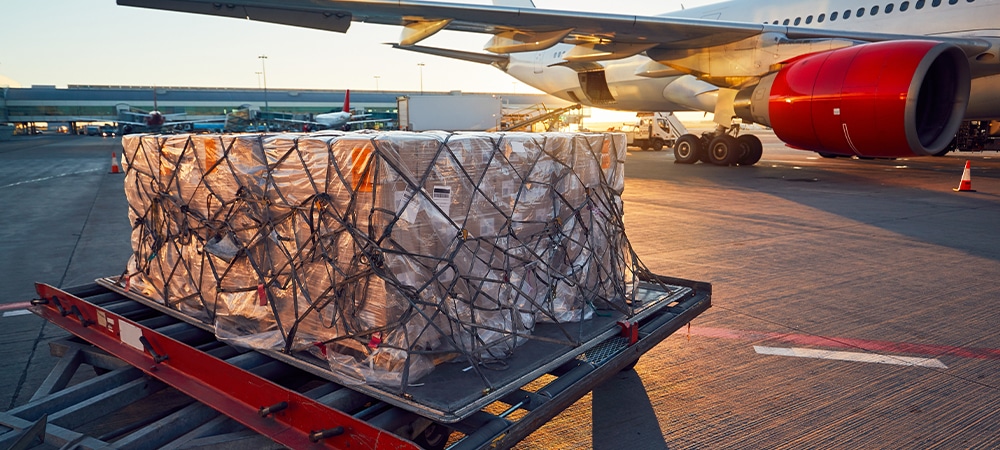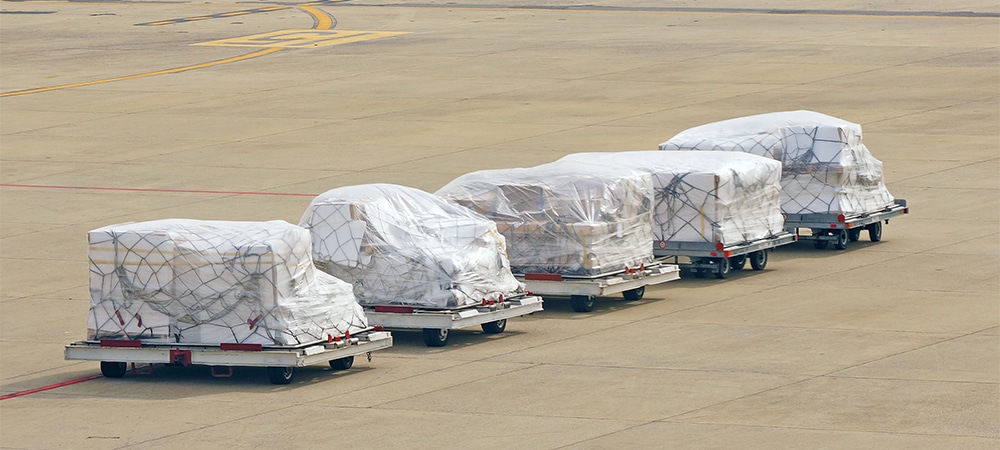Navigating the intricacies of air freight from Toronto and Chicago involves understanding the critical aspects of size and weight limitations. These parameters are pivotal in determining the feasibility, cost, and method of shipping goods via air.
For instance, when shipping goods from Toronto to Chicago by air, it’s crucial to consider the nature of the cargo. Perishable goods may require special handling and equipment, impacting the allowed size limit. Similarly, you’ll want to consider the aircraft type as some aircraft models determine the takeoff weight, indirectly impacting the cargo size limit.
If you plan to ship your cargo by air from Toronto to Chicago, this article is your ultimate guide. Here, we discuss the size limitations for air freight and factors to consider when shipping by air.
Cross-Border Shipping Size and Weight Limitations
Air freight carriers impose specific size and weight restrictions to ensure safety, efficiency, and compliance with aviation regulations. These limitations can vary based on the aircraft type, the airline’s policies, and the nature of the cargo.
Weight Limitations
The weight of an air freight shipment is a critical factor in determining its transport feasibility. Most commercial airlines set a weight limit per package, ranging from 70 to 100 kilograms (approximately 150 to 220 pounds).
However, for larger cargo shipments, air freight carriers utilize cargo planes that can accommodate significantly higher weights, up to several tons. The total weight of the shipment affects fuel consumption, aircraft balance, and safety.
Heavier shipments may require special handling and logistics planning, potentially influencing the overall cost.
Size Limitations
The cargo hold dimensions of the aircraft primarily dictate size limitations for air freight. Standard dimensions for air cargo pallets are typically 2.44 x 3.15 meters (8 x 10.33 feet), but this can vary.
The maximum height for cargo is often restricted by the aircraft’s cargo door dimensions, usually around 1.60 meters (5.25 feet) for passenger aircraft and higher for cargo planes. You may need to transport oversized or irregularly shaped cargo on freighter aircraft designed to handle such loads.
These planes have larger cargo doors and customizable loading configurations to accommodate various sizes.
Related Article: Shipping to Canada from Other Countries: What You Need to Know

Considerations for Successful Air Shipping
Several factors influence the size and weight restrictions for air freight shipping, including:
- Aircraft Type: Different aircraft types have varying cargo capacities and weight restrictions. Larger aircraft, like Boeing 747s or Airbus A380s, can carry heavier loads than smaller aircraft, such as regional jets or turboprops.
- Payload Range: Aircraft have a maximum payload range, which is the maximum weight of cargo they can carry over a certain distance. Fuel capacity, engine power, and aerodynamic performance influence this limitation.
- Fuel Requirements: Aircraft must carry enough fuel for the entire flight, including reserves for diversions or emergencies. The fuel required depends on distance, altitude, weather conditions, and airspace restrictions. The weight of fuel reduces the available payload capacity for cargo.
- Cargo Density: Airlines may have restrictions based on cargo density. Light, bulky items may take up a lot of space without reaching the maximum weight limit, while dense items may reach the weight limit before filling the available space.
- Balance and Stability: Proper weight distribution is critical for aircraft balance and stability. Cargo must be distributed evenly throughout the aircraft’s cargo hold to prevent issues like tail-heavy or nose-heavy configurations affecting flight characteristics.
- Regulatory Requirements: Aviation authorities impose regulations on maximum payload weights for safety reasons. These regulations ensure that aircraft remain within their certified operating limits, minimizing the risk of structural damage or loss of control.
- Operating Conditions: Altitude, temperature, and humidity can affect aircraft performance and payload capacity. High-altitude airports or hot and humid conditions may reduce the weight an aircraft can safely carry.
- Route Constraints: Some routes may restrict cargo weight due to runway length, terrain, or airspace limitations. Short runways or mountainous terrain may also limit aircraft’s maximum takeoff weight.
- Cargo Handling Equipment: Cargo loading and unloading operations require specialized equipment such as pallets, containers, and vehicles. You must consider the weight of this equipment when calculating the maximum allowable payload.
- Safety Margin: Airlines often apply safety margins to account for uncertainties such as changes in weather, air traffic control delays, or unexpected events. These margins ensure that aircraft remain within safe operating limits even under challenging conditions.
Maximizing Air Shipping Efficiency Within Limitations
Understanding and planning around the size limitations for air freight is crucial for efficient and cost-effective air freight shipping. Here are some strategies to maximize your shipment’s compliance and efficiency:
- Consult with Experts: Consult logistics experts like RoadLINX, who can provide detailed information on the best air freight options for your cargo needs, considering size, weight, and regulatory compliance.
- Optimize Packaging: Use packaging that protects your goods while minimizing excess weight and volume. Custom crating may be necessary for irregularly sized items to conform to air freight standards.
- Consider Consolidation: For smaller shipments, consider cargo consolidation services. This approach allows you to share container space with other shippers, optimizing costs and meeting size and weight requirements.
Related Article: Navigating Global Boundaries: A Budget-Friendly Guide to International Shipping with RoadLINX

Experienced Air Shipping Service Ontario
Navigating air freight’s size and weight limitations from Toronto to Chicago requires careful planning and expertise. By partnering with RoadLINX, you leverage our experience and resources to optimize your air freight shipments. We ensure your air freight shipment meets all necessary regulations and arrives on time and within budget.
Whether you’re transporting high-value electronics, critical pharmaceuticals, or any other cargo, we ensure your shipments arrive safely, efficiently, and cost-effectively. Contact us today at 905-760-1141 to explore how we can enhance your air freight experience.

Leave a Reply